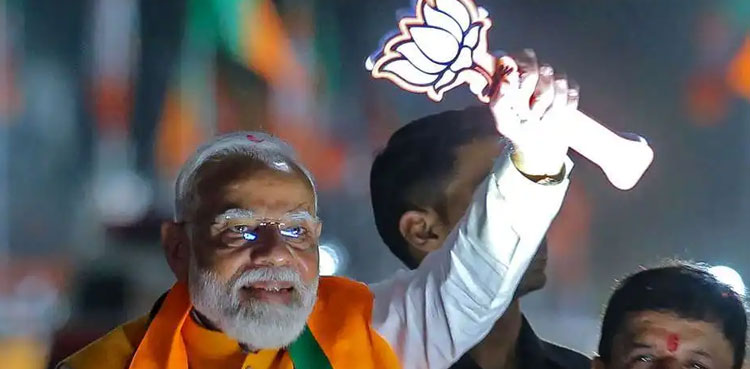Modi's Billion-Dollar Budget Targets Jobs and Economic Growth
India unveils a budget to drive job creation, rural development, and fiscal discipline, reflecting Modi's strategic moves to regain voter support after electoral setbacks.
Published July 25, 2024 - 00:07am

Image recovered from arynews.tv
India's government has announced a substantial budget aimed at fostering job creation and supporting its coalition partners, in a strategic effort to regain voter confidence following a recent election defeat. Prime Minister Narendra Modi's administration has allocated billions of dollars for rural programs and job creation, while also implementing tax changes designed to attract foreign investment.
The budget, presented by Finance Minister Nirmala Sitharaman, includes a total expenditure of $576 billion, with significant allocations directed towards rural developments and employment initiatives. Specifically, $32 billion is earmarked for rural programs and $24 billion will be invested over the next five years to spur job creation. Additionally, over $5 billion is set aside for regions governed by key coalition partners.
Sitharaman emphasized the significance of employment, skilling, small businesses, and the middle class in this budget. The government also plans to push through reforms related to land and labor to ensure sustained economic growth. Despite the increase in spending, the fiscal deficit target has been reduced to 4.9% of GDP for the fiscal year ending March 31, 2025, supported by a $25 billion surplus from the central bank. Gross market borrowing has been marginally lowered to 14.01 trillion rupees.
The primary motivation behind these economic maneuvers is to stabilize India's economy, which grew by 8.2% in the last fiscal year and is projected to grow between 6.5% and 7% this fiscal year. However, the government must navigate the challenges presented by prior unsuccessful attempts at land and labor reforms, which faced resistance from states fearing protests.
Job creation is high on the list of priorities. The budget includes incentives for companies to train their employees and offers cheaper loans for higher education. India's urban unemployment rate is reported at 6.7%, but private estimates, such as those by the Centre For Monitoring Indian Economy, suggest it could be as high as 8.4%.
In line with the government's focus on long-term growth, there is a continued investment in infrastructure projects amounting to 11.11 trillion rupees, with 1.5 trillion rupees assigned as long-term loans to states for these projects. These loans are linked to reform milestones in areas such as land and labor, which Sitharaman mentioned would be promoted in the government's third term.
The government also introduced tax changes designed to cool down an overheating market. Taxes on equity investments held for less than a year were raised to 20% from 15%, and for those held longer than 12 months, the rate increased to 12.5% from 10%. Additionally, the tax on equity derivative transactions has been increased and will come into effect from Oct 1. Despite the initial negative reaction from the market, with shares and the rupee declining, the main stock indexes recovered most of their losses by the end of the trading day.
Corporate tax for foreign companies was cut from 40% to 35% to attract additional foreign investment. This reduction, coupled with a lower tax burden for lower-income consumers, is expected to boost spending, as reflected in the rise of consumer stocks to record highs. The tax reforms aim to stabilize the market and attract long-term investors, although the immediate impact might seem modest.
Sakshi Gupta, principal economist at HDFC Bank, lauded the budget for striking a balance between supporting growth and maintaining fiscal discipline. Gene Fang from Moody's Ratings, however, warned that implementing the more ambitious reforms would be challenging for the coalition. Previous attempts to ease land acquisition and lay off staff have met with strong resistance from the states.
The budget's concessions to coalition partners include hastening loans from multilateral agencies for the eastern state of Bihar and the southern state of Andhra Pradesh. This move is aimed at consolidating support from key allies within the coalition government.
In conclusion, Modi's new budget reflects a comprehensive approach to addressing the immediate needs of job creation and rural development while maintaining a trajectory towards fiscal discipline. This delicate balance between spending on initiatives that promise immediate benefits and long-term investments is intended to address pressing economic issues and stabilize India's economic growth trajectory.






